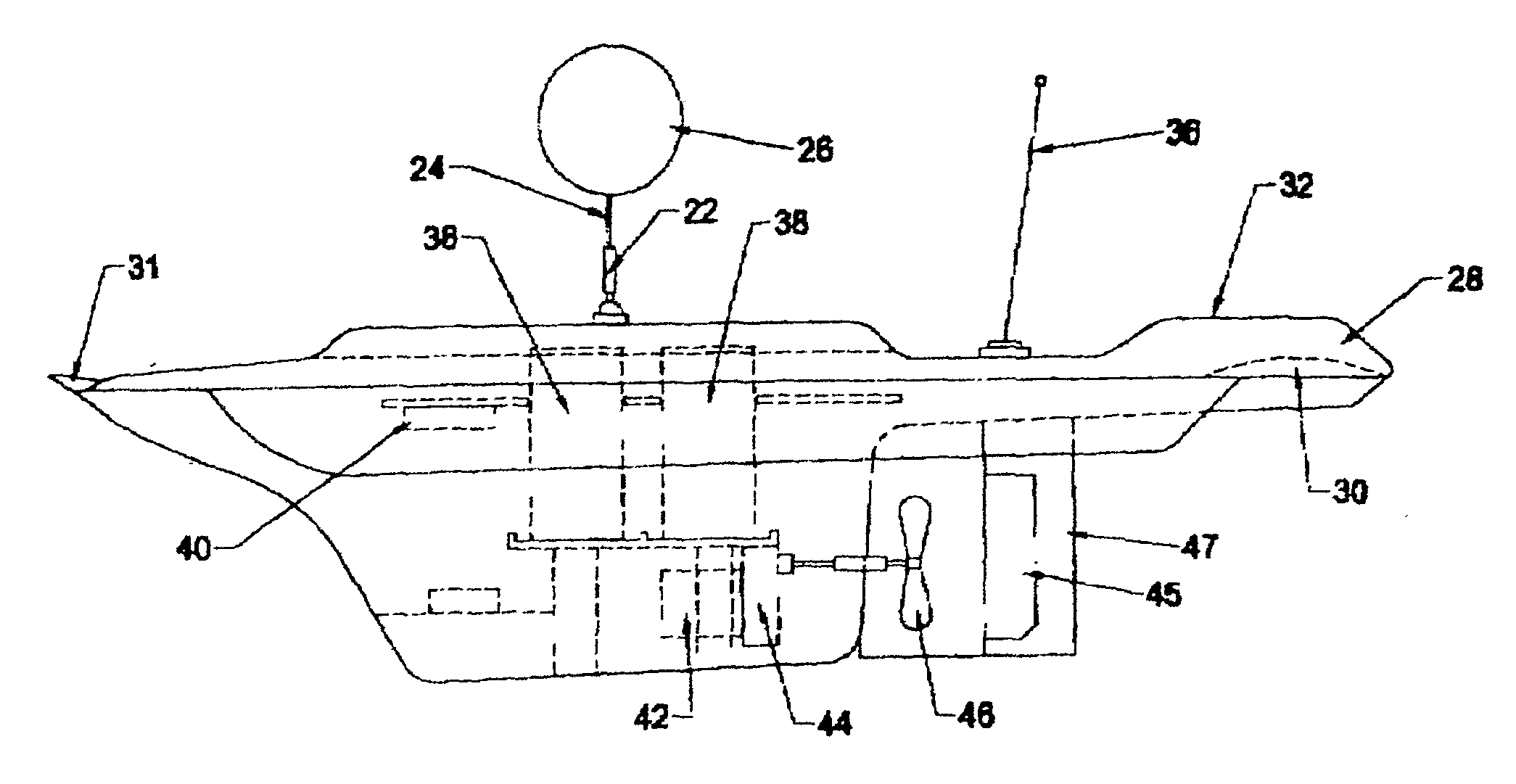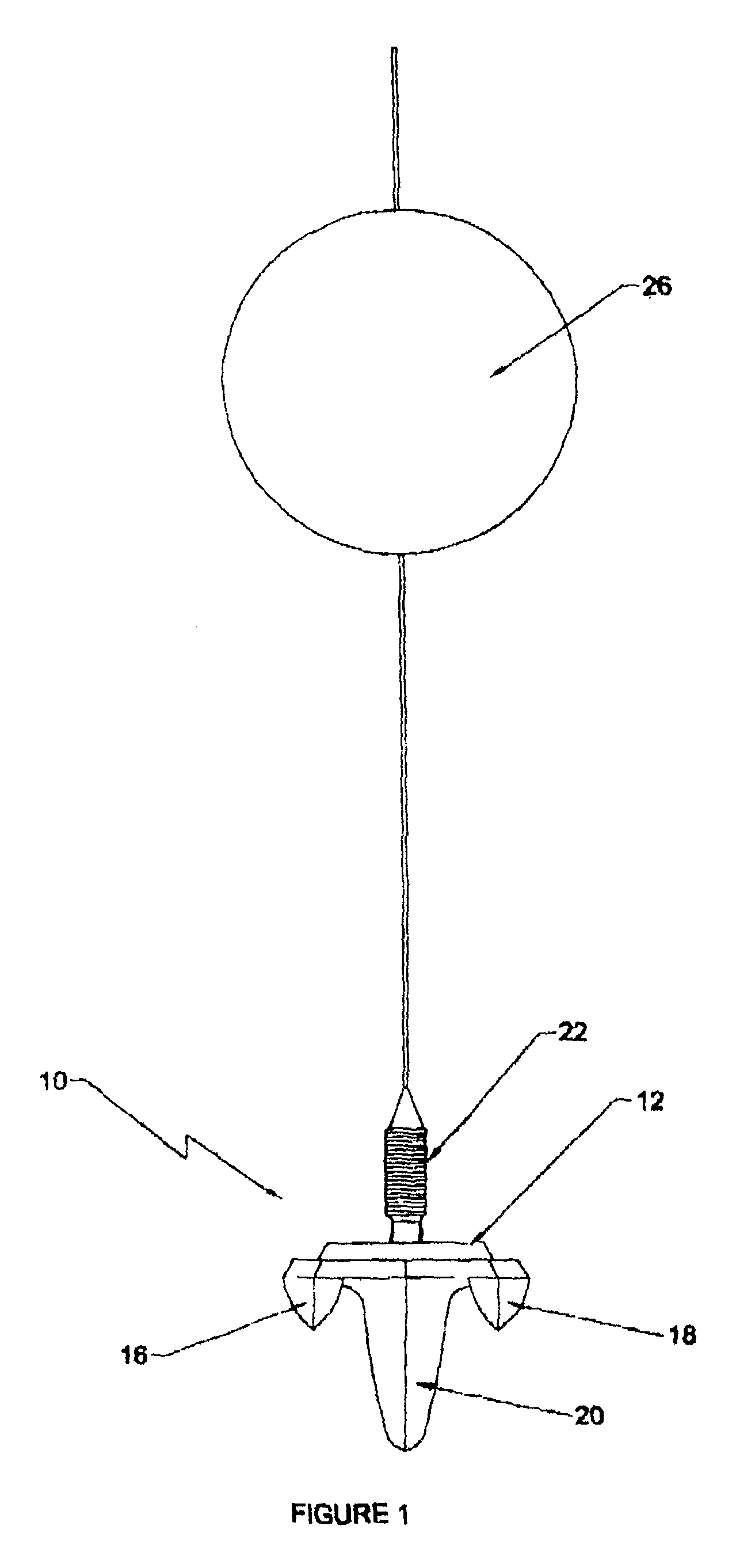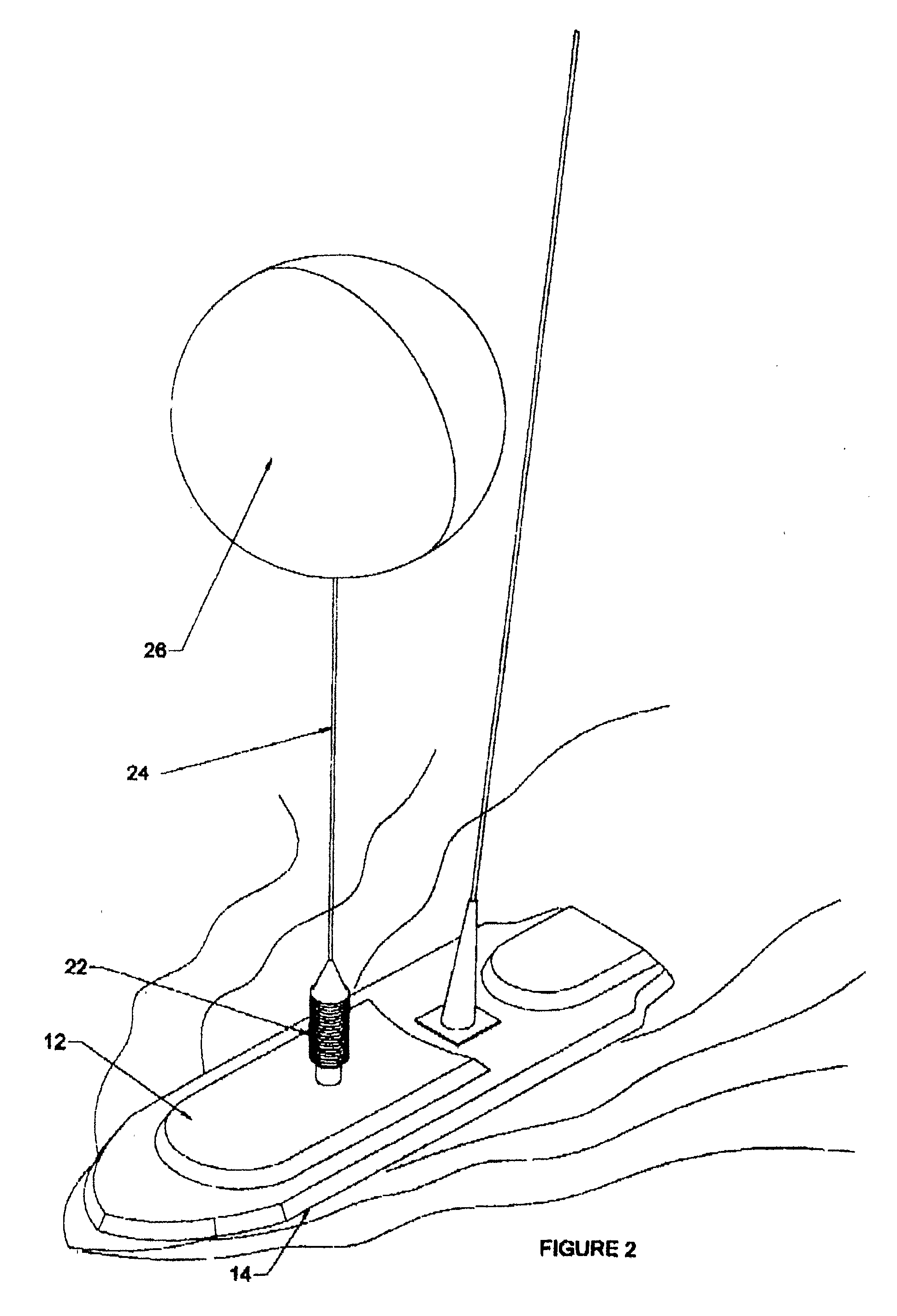Radio controlled boat
a radio controlled and boat technology, applied in the field of radio controlled boats, can solve the problems of not being able to successfully adapt to sea use, prone to topple easily in the waves, and being unable to correct themselves
- Summary
- Abstract
- Description
- Claims
- Application Information
AI Technical Summary
Benefits of technology
Problems solved by technology
Method used
Image
Examples
embodiment of invention
[0030] The preferred embodiments of the invention are described below with reference to the accompanying drawings:
[0031]FIG. 1 is a front view of a boat according to the invention;
[0032]FIG. 2 is a view of the boat in the water;
[0033]FIG. 3 is a side view of the boat;
[0034]FIG. 4 is a top view of the boat;
[0035]FIG. 5 is a bottom view of the boat;
[0036]FIG. 6 is a front (bow) view;
[0037]FIG. 7 is a rear (stern) view;
[0038]FIGS. 8 and 9 are side and top views of the boat adapted for use in life-saving.
[0039] In FIGS. 1 and 2 a radio controlled bait boat (10) of the invention has a substantially flat deck (12) which is only slightly raised above the water line (14). The boat has twin hulls (16, 18) and a deep and heavy central keel (20). The depth of the keel relative to the exposed height of the deck is approximately in the ratio 5:1 as shown in FIG. 3. This results in an extremely stable vessel.
[0040] The weight of the keel is substantial, with the components of the motor b...
PUM
 Login to View More
Login to View More Abstract
Description
Claims
Application Information
 Login to View More
Login to View More - R&D
- Intellectual Property
- Life Sciences
- Materials
- Tech Scout
- Unparalleled Data Quality
- Higher Quality Content
- 60% Fewer Hallucinations
Browse by: Latest US Patents, China's latest patents, Technical Efficacy Thesaurus, Application Domain, Technology Topic, Popular Technical Reports.
© 2025 PatSnap. All rights reserved.Legal|Privacy policy|Modern Slavery Act Transparency Statement|Sitemap|About US| Contact US: help@patsnap.com



